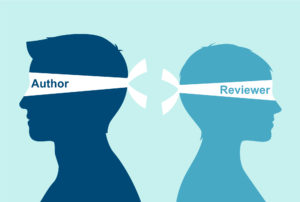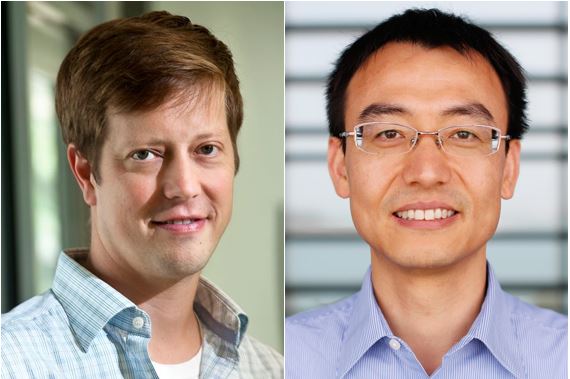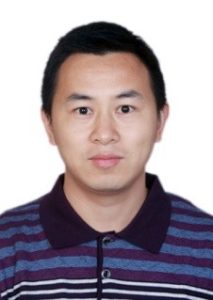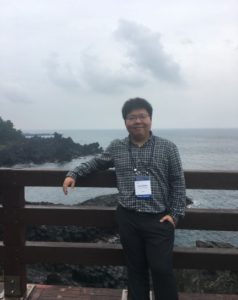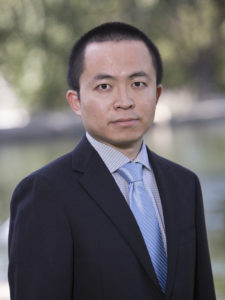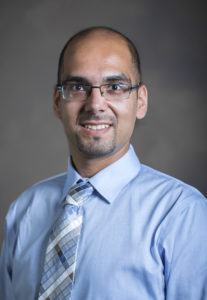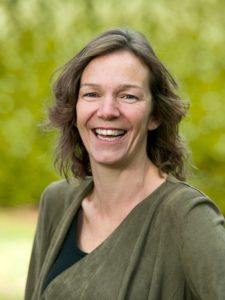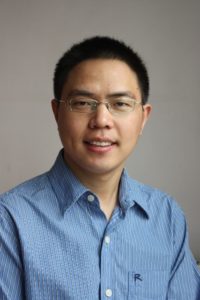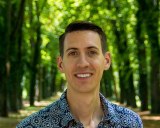 Dr. Kyle Doudrick is an Assistant Professor in the Department of Civil & Environmental Engineering & Earth Sciences at the University of Notre Dame (UND). Dr. Doudrick received his Ph.D. (2013) at Arizona State University where he investigated the use of photocatalysts for treating nitrate, a ubiquitous drinking water contaminant. His research group at UND seeks to solve critical problems in environmental engineering using nanotechnology, with a focus on developing physical-chemical technologies for treating water contaminants and understanding the fate and transport of nanoparticles in streams. Dr. Doudrick is a recipient of the National Science Foundation CAREER award and a 2019 Fulbright Scholar. He also has a passion for improving environmental engineering education using virtual reality (VR), including the development of 360 immersive tours. You can view his VR drinking water treatment plant tour on YouTube with or without a headset (https://www.youtube.com/watch?v=zRFBVFBZ1jI).
Dr. Kyle Doudrick is an Assistant Professor in the Department of Civil & Environmental Engineering & Earth Sciences at the University of Notre Dame (UND). Dr. Doudrick received his Ph.D. (2013) at Arizona State University where he investigated the use of photocatalysts for treating nitrate, a ubiquitous drinking water contaminant. His research group at UND seeks to solve critical problems in environmental engineering using nanotechnology, with a focus on developing physical-chemical technologies for treating water contaminants and understanding the fate and transport of nanoparticles in streams. Dr. Doudrick is a recipient of the National Science Foundation CAREER award and a 2019 Fulbright Scholar. He also has a passion for improving environmental engineering education using virtual reality (VR), including the development of 360 immersive tours. You can view his VR drinking water treatment plant tour on YouTube with or without a headset (https://www.youtube.com/watch?v=zRFBVFBZ1jI).
Read Kyle Doudrick’s Emerging Investigator Series article “protein adsorption and transformation on catalytic and food-grade TiO2 nanoparticles in the presence of dissolved organic carbon” and read more about him in the interview below:
Your recent Emerging Investigator Series paper focuses on Protein Adsorption and Transformation on Catalytic and Food-Grade. How has your research evolved from your first article to this most recent article?
I first started working with food-grade titanium dioxide during my Ph.D., where we characterized the surface chemistry and its effect on cells (Environmental Science & Technology 48 (11), 6391-6400; Cell Biology and Toxicology 30 (3), 169-188; PloS One 11 (10), e0164712). What stood out broadly from these studies was the difference between the titanium dioxide in our food and pharmaceutical products compared to the “chemical” or “catalytic” grade titanium dioxide that is often used in toxicity and transport studies. The food-grade titanium dioxide is present day – we are all ingesting it – but there have been few studies on the adverse effects. This includes studies about the adsorption of proteins to nanoparticles, which we understand to be critical for determining bioactivity. So, naturally, the first question that came to my mind was: does the protein adsorption behavior differ when we use more realistic nanoparticles like the food-grade materials? The work we present here confirms that the protein formation is quite different for the two types. Further, we provide evidence that the protein adsorption behavior changes if the nanoparticle is first exposed to dissolved organic carbon (e.g., from a stream), and this behavior can be quite different depending on the nanoparticle. I think these findings have some broad implications that should make us question whether we are choosing the right nanoparticles/scenarios in our experiments.
What aspect of your work are you most excited about at the moment?
We currently have a project in which we are investigating the transport of nanoparticles in realistic streams. We have a unique site at the University of Notre Dame called the Linked Experimental Ecosystem Facility (ND-LEEF). It has four hydraulically identical streams lined with varying media types, and we are adding nanoparticles to study the transport behavior under different conditions. In collaboration with Prof. Diogo Bolster, we hope to use this data to create a model that will be able to predict the transport better than what is currently available. I think these types of studies are an important step to simplifying the complexity that comes with investigating nanoparticles in real systems. We have already observed some interesting results and the paper should be out soon!
In your opinion, what are the most important questions to be asked/answered in this field of research?
As I eluded to above, I think figuring out how nanoparticles behave in real systems will be a critical and challenging question to answer. The myriad combinations of nanoparticle physical-chemical properties and environmental condition/scenarios presents us with an almost insurmountable challenge of creating theoretical based predictions (e.g., linking surface charge to transport behavior). These approaches may be good for simplified lab experiments, but they don’t scale well to realistic systems. So, when nanoparticles enter the environment after being released from, e.g., a food, do they eventually just become like any other metal oxide/organic carbon coated with organic matter or adsorbed to minerals or do they behave differently?
What do you find most challenging about your research?
One of the biggest challenges in studying nanoparticles in complex, realistic environments is the analytics. If you are interested in something like silver, then you must deal with its dissolution and/or transformation, and if you are working with carbon nanotubes then you are fighting against the high carbonaceous background concentrations. Our studies are only as good as our detection methods, and I think this has become a critical area that is not getting enough attention, especially if we want to move beyond lab-scale experiments. These limitations force us to be creative with experimental design by selecting certain nanoparticles and using model field sites, but that makes it difficult to achieve truly realistic experiments (e.g., tracking nanoparticle movement in Lake Michigan or in a large river).
In which upcoming conferences or events may our readers meet you?
I will be at two upcoming conferences: the American Chemical Society in August and the Sustainable Nanotechnology Organization (SNO) in November, both in San Diego. I highly recommend the SNO conference to this audience as it is a great platform to discuss our research amongst nano-minded people.
How do you spend your spare time?
I have numerous hobbies, but these days I rarely get to partake. When I do find some free time, I enjoy spending it with my family and friends, traveling, playing volleyball, reading, hiking, gardening, photography, and playing musical instruments poorly.
Which profession would you choose if you were not a scientist?
A question many tenure track faculty seem to ask themselves around year five. I do love research and teaching, but I could see myself enjoying many other professions. Imaging what pathways you might have taken is fun and I’ve often thought I could have been a good tour guide or CIA analyst. But, I think most of all, I would like to have a sustainable farm somewhere with lush, rolling hills where I could write fantasy or science fiction stories when I’m not tending to my animals (and bees) and crops. Who knows, maybe one day I will retire and get to say I did both!
Can you share one piece of career-related advice or wisdom with other early career scientists?
How about one big congregated piece of advice? I think many young researchers stress about hitting the ground running so they can carve out their “niche” and work on the next big thing. Instead, I think when starting out you just should focus on a topic that you are passionate about and become good at that. Being a young researcher/professor is challenging and I think if you concentrate on becoming a better scientist/teacher, mentor, and writer, then the rest will fall into place as you gain more experience. And there are many books available that can help you along the way – Boice is a good place to start, and don’t feel guilty about taking some time out of research or writing to read it. Definitely make time for your family and friends and don’t get into a habit of working weekends (easier said than done). Don’t take bad reviews to heart, and in return be respectful and constructive when you write proposal and paper reviews. Most of all, have fun.
Comments Off on Emerging Investigator Series: Kyle Doudrick
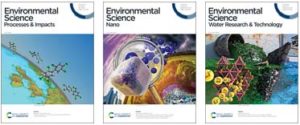 In traditional single-blind peer review the reviewers are anonymous, but author names and affiliations are known to reviewers.
In traditional single-blind peer review the reviewers are anonymous, but author names and affiliations are known to reviewers.

